These gluten-free sourdough rolls are soft, fluffy, pillowy, chewy, and flavorful just like the "regular" good old dinner rolls! They can be made with starter discard if you add yeast. Make sure to check out my other gluten-free sourdough recipes!
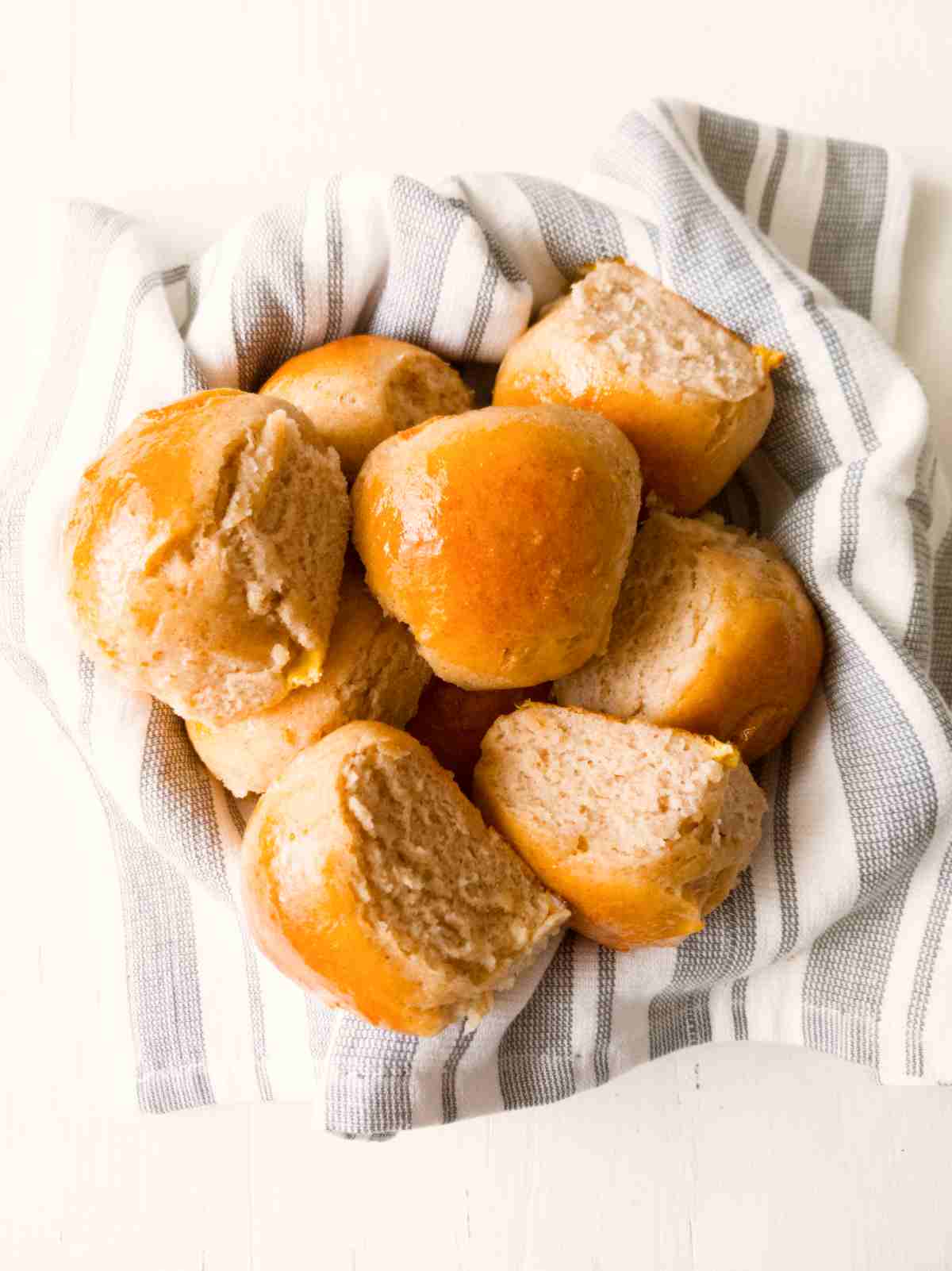
Jump to:
Why You Will Love This Recipe
- Texture. These rolls are incredibly soft, fluffy, and moist!
- Flavor. No grittiness here! Tastes just like a good old dinner roll. You can also use them as hamburger buns. For xanthan gum-free buns check out my sourdough buns recipe!
- Easy. These dinner rolls only need one rise before baking!
Note: you might also like my sourdough naan bread, bagels with discard, and sourdough soft pretzels!
New to gluten-free sourdough? Watch my 16-minute video tutorial for beginners!
What Is A Sourdough Starter?
A sourdough starter is a wild yeast that is used to bake sourdough bread. You can easily make it at home with flour, water, and a little bit of patience! For more details, read my gluten-free starter guide.
Ingredients
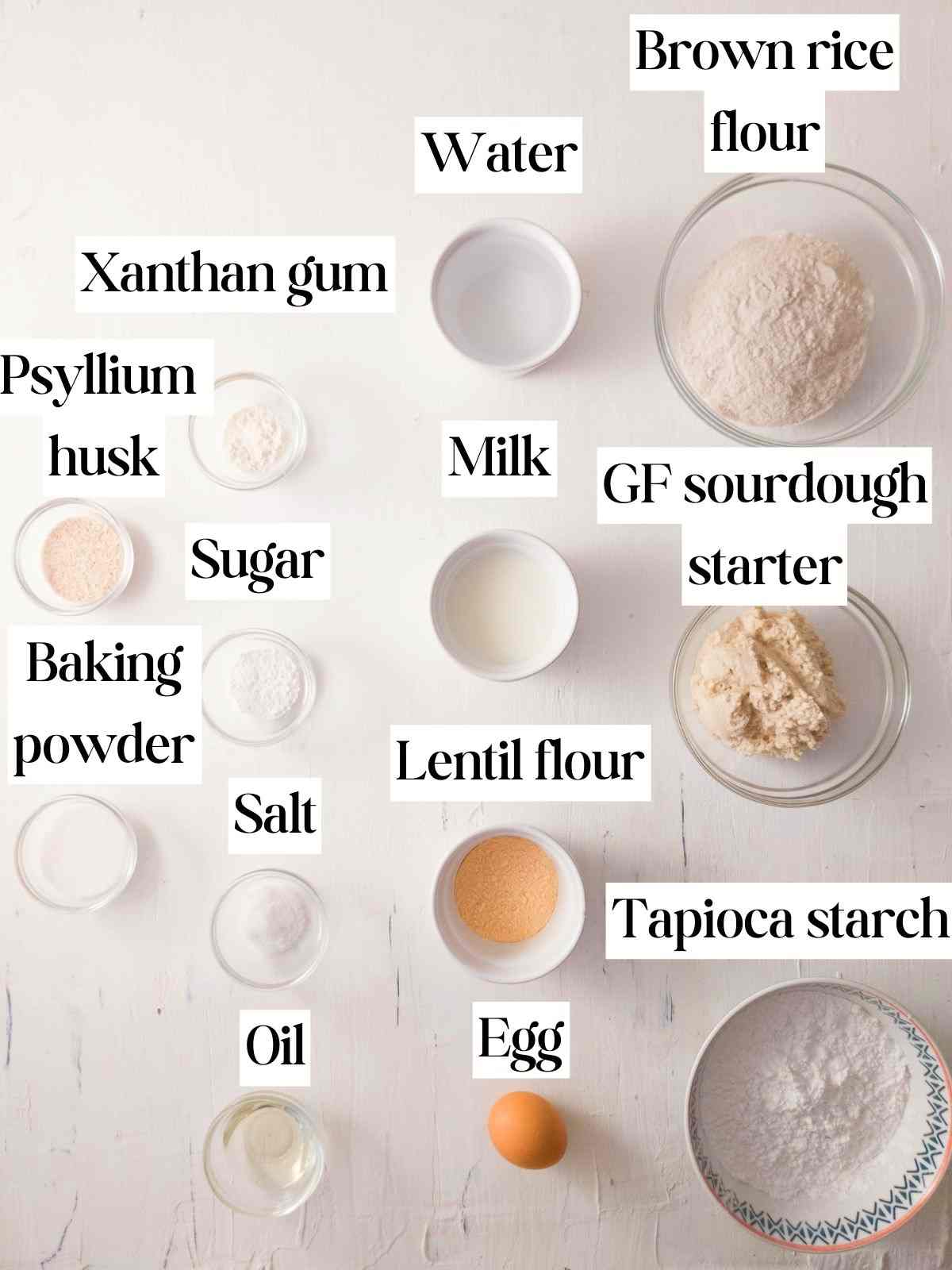
Psyllium husk - you can use whole husks or powder. There are two types of psyllium powder, one is finer than the other. Normally they won't tell you on the package which type it is but they do behave differently. If you are using the super fine type, you need less of it! To see the difference go to my psyllium husk instructions post.
Xanthan gum - I am using both psyllium husk and xanthan gum in this recipe for the best texture!
Egg - use a room-temperature egg.
Oil - I used sunflower oil.
Gluten-free sourdough starter - you can use a mature starter at its peak activity or starter discard with the addition of regular yeast.
Substitutions
Tapioca starch (same as tapioca flour) – you can use arrowroot starch. You can also use cornstarch/potato starch but your rolls might not be as chewy.
Brown rice flour – you can use millet flour instead.
Lentil flour – use gluten-free oat flour, sorghum flour, or white teff flour instead.
Sourdough starter – you can make these gluten-free dinner rolls with yeast instead of sourdough starter, for that, omit the starter and use 8g of active dry yeast.
Psyllium husk – there is no good substitute for psyllium husk other than psyllium husk powder. If using powder, use 8.5 grams and add it to the dry ingredients instead of the water. Do not reduce the water amount! You will need to let the dough sit for psyllium husk to absorb the liquids.
Xanthan gum – I am using both psyllium husk and xanthan gum in this recipe for the best texture. For the best results, use both.
Milk – use plant-based milk for a dairy-free version.
Egg – you can use ¼ cup of applesauce or a chia (or flax) egg.
Sugar – you can use honey or maple syrup instead.
Step-By-Step Instructions
Step 1 - Mix the dough
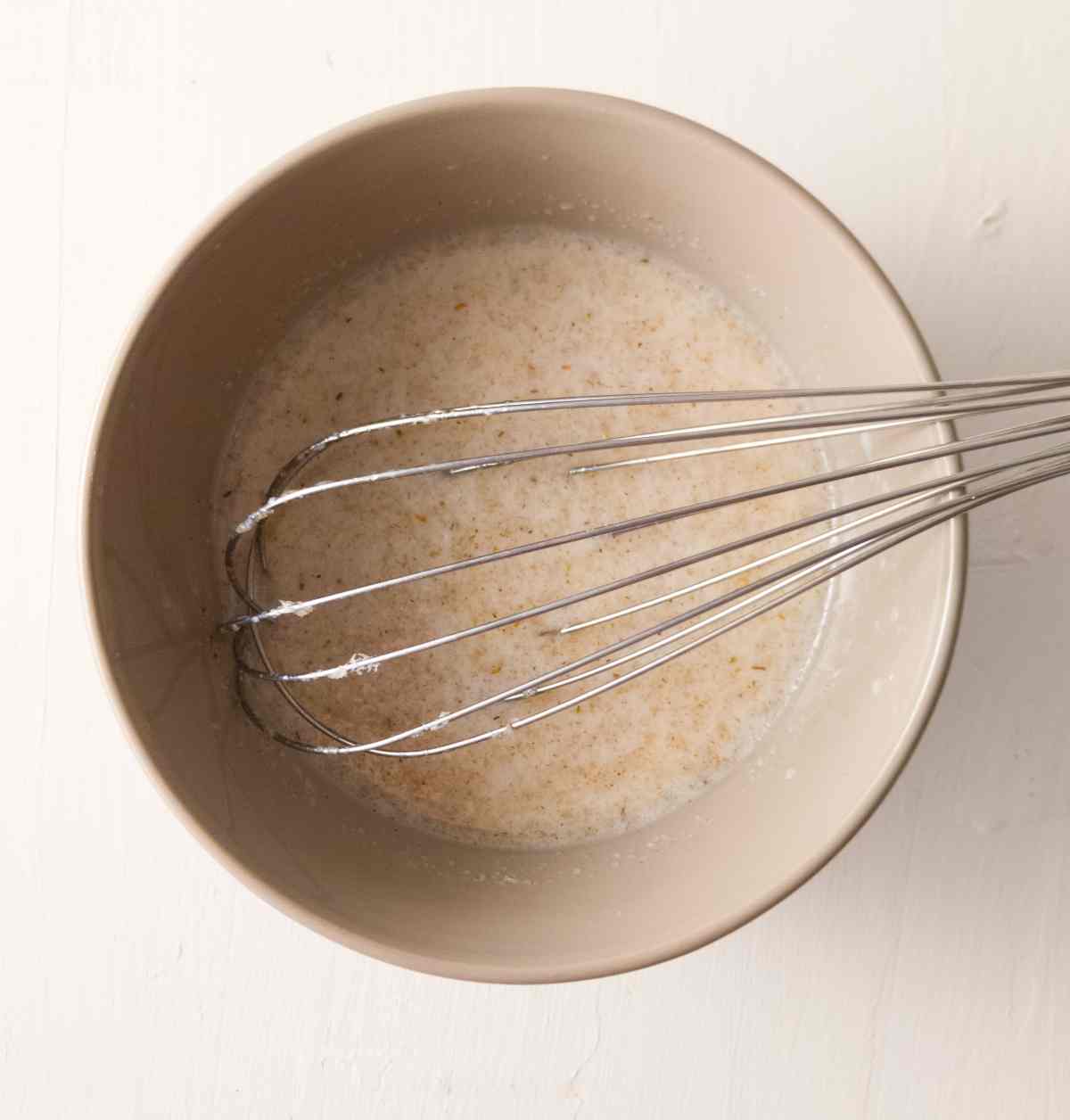
Add psyllium husk, sugar, oil, milk, and water to a medium-sized bowl and whisk to combine. Set aside for a couple of minutes for psyllium gel to form.
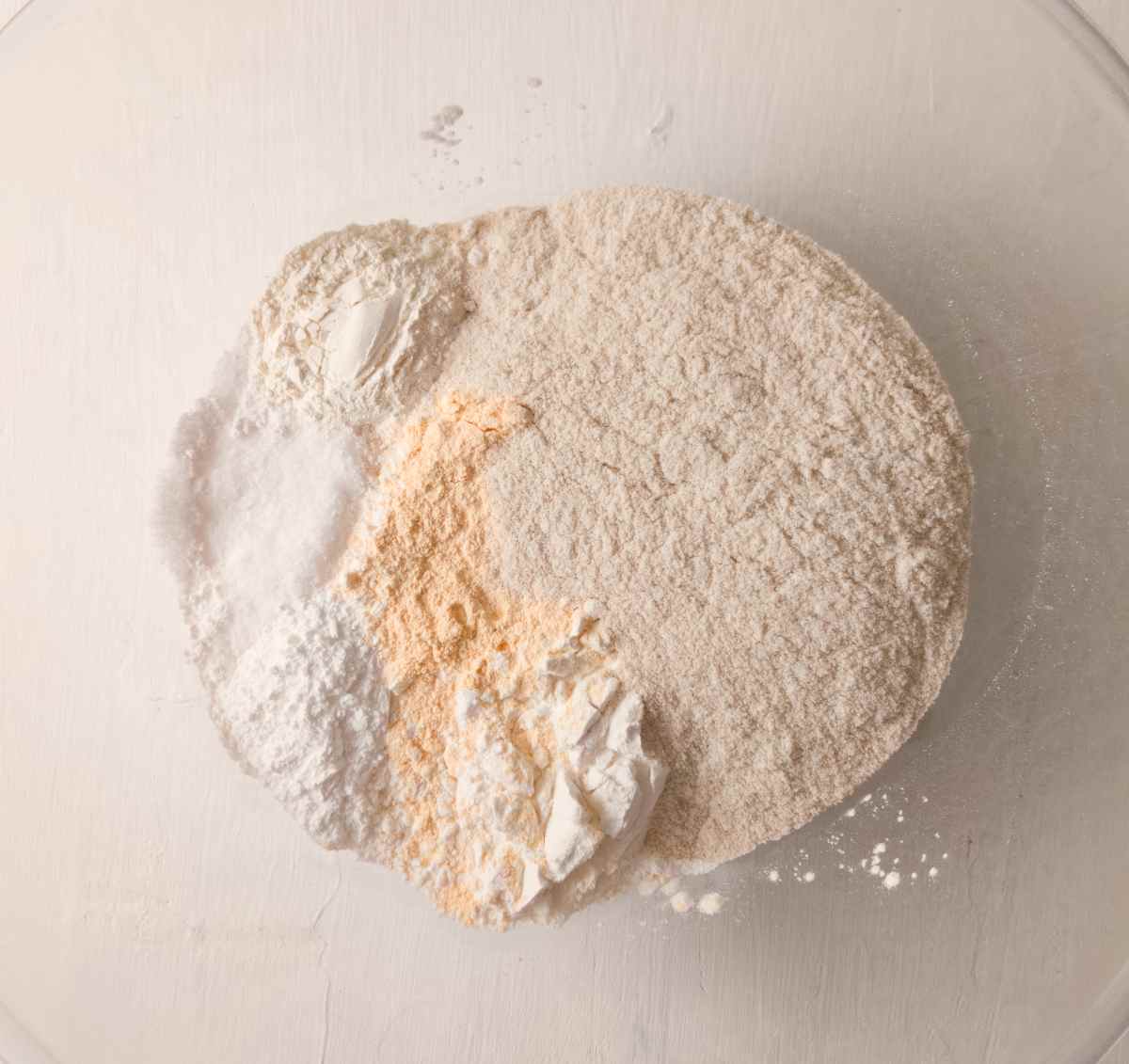
Add dry ingredients to the bowl of a stand mixer (or a large mixing bowl) and whisk to combine.
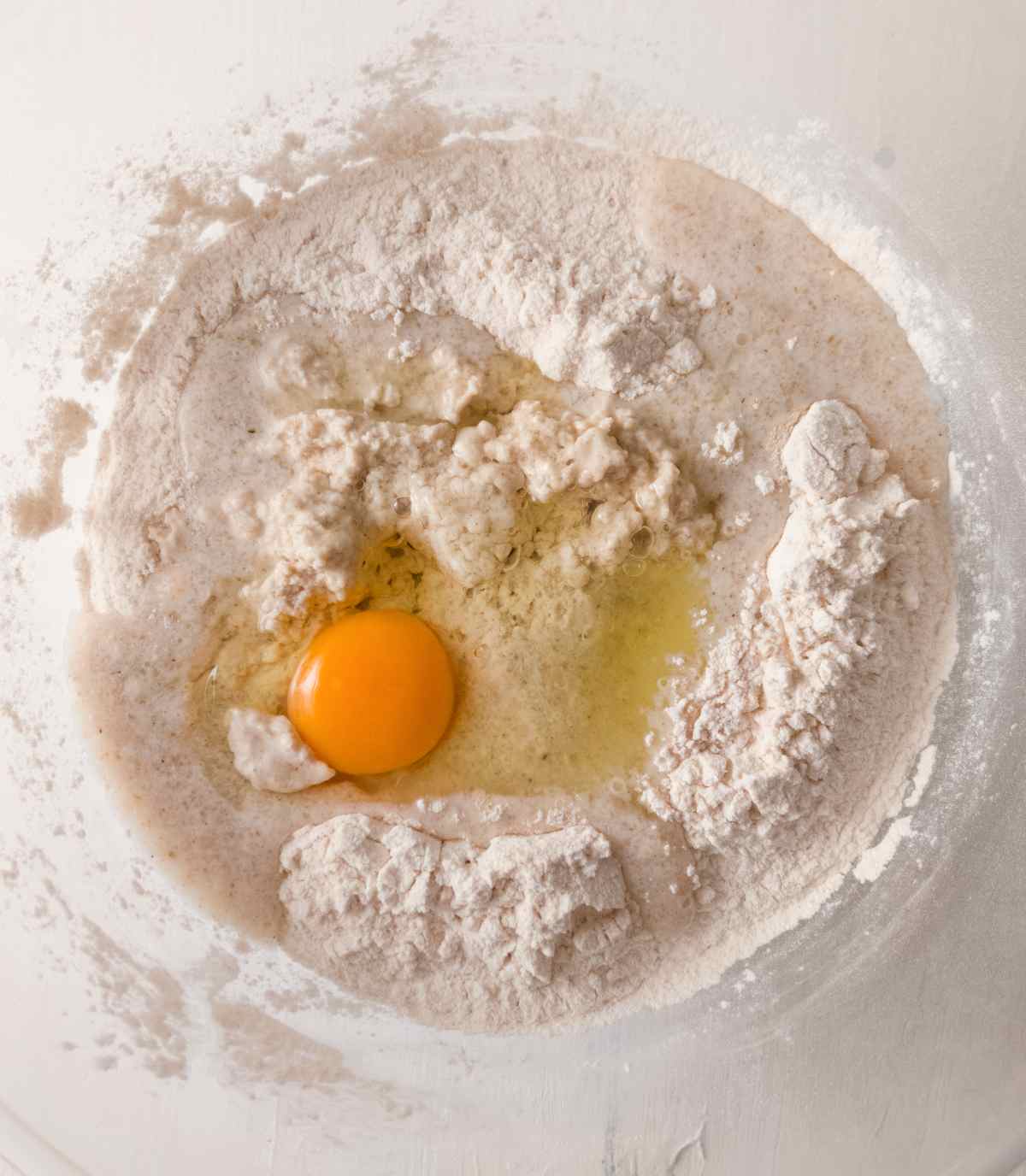
Once psyllium gel is ready, add it to the dry ingredients along with the egg and the sourdough starter. If you are using starter discard, then add 7g of dry active/instant yeast or 20g of fresh yeast at this point.
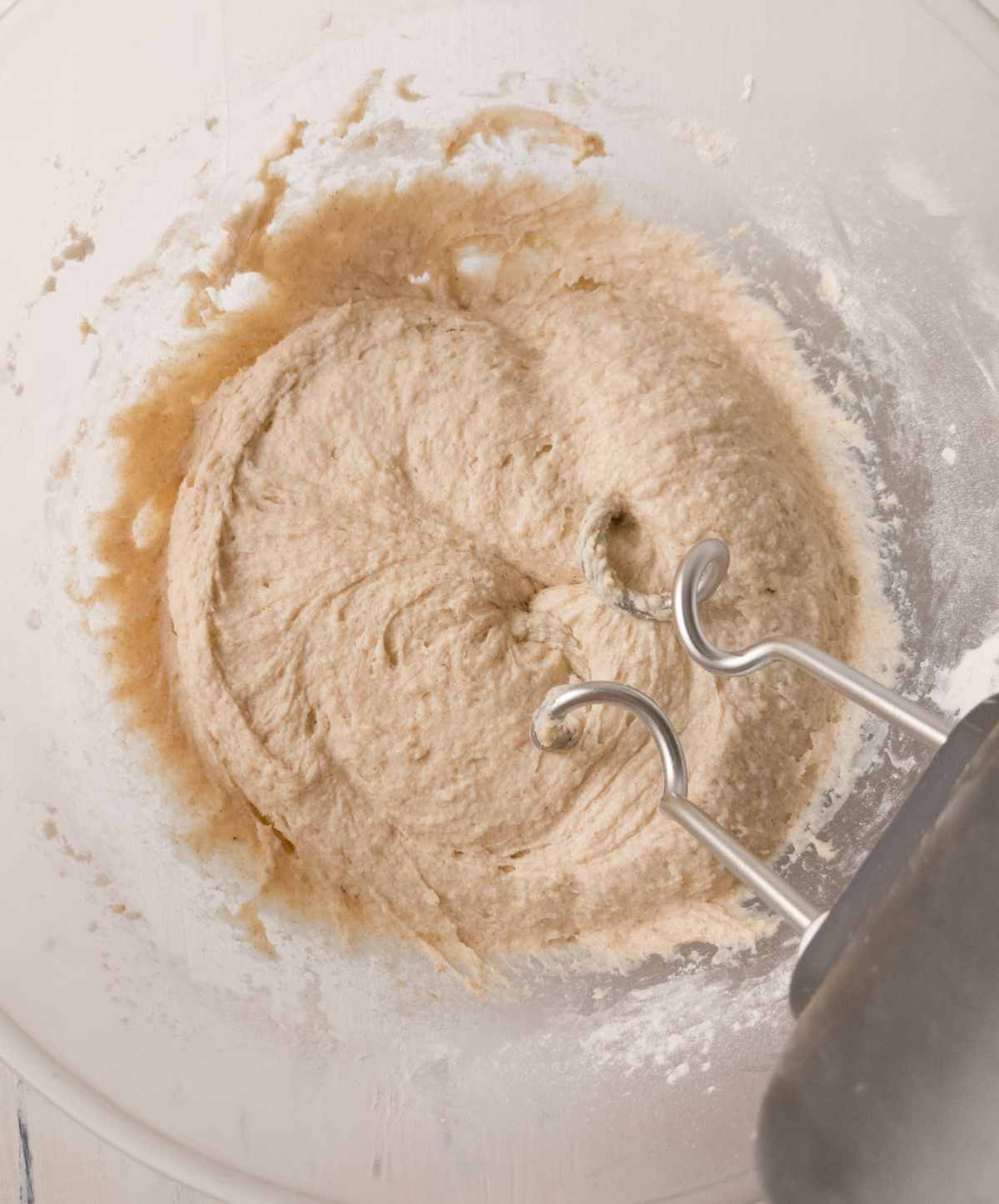
Knead the dough for 5 minutes with a stand or hand mixer and 10 minutes if you are mixing by hand. Kneading for a longer time allows the rolls to have an extra smooth surface without bumps!
Step 2 - Shape the rolls
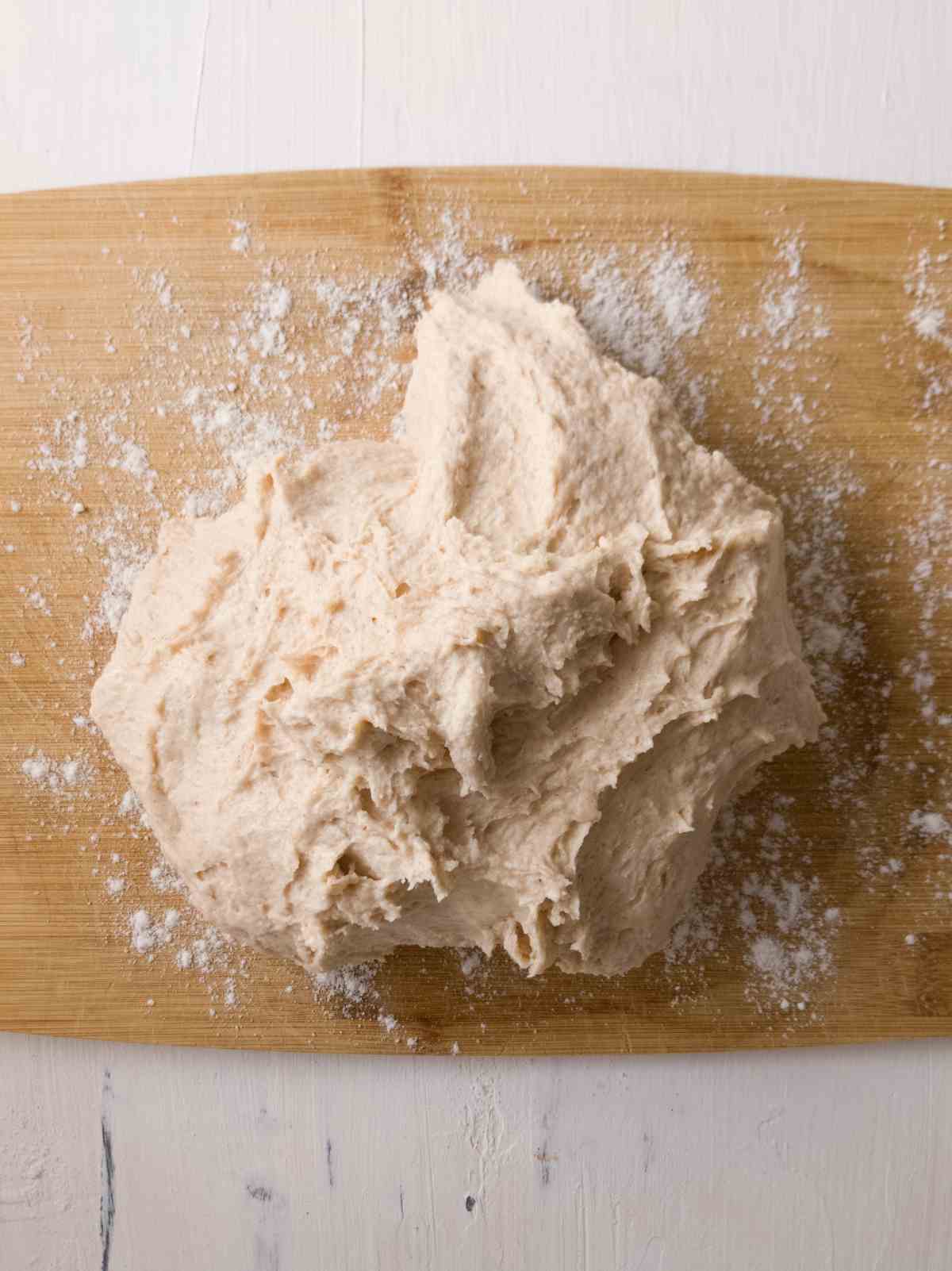
Grease a medium-sized baking dish with butter, margarine, lard, or oil and set aside. Turn the dough onto the floured surface. The dough will be very sticky! Avoid the urge to add more flour. Rather, grease your hands with oil to prevent sticking. Keep greasing your hands if the dough starts sticking again!
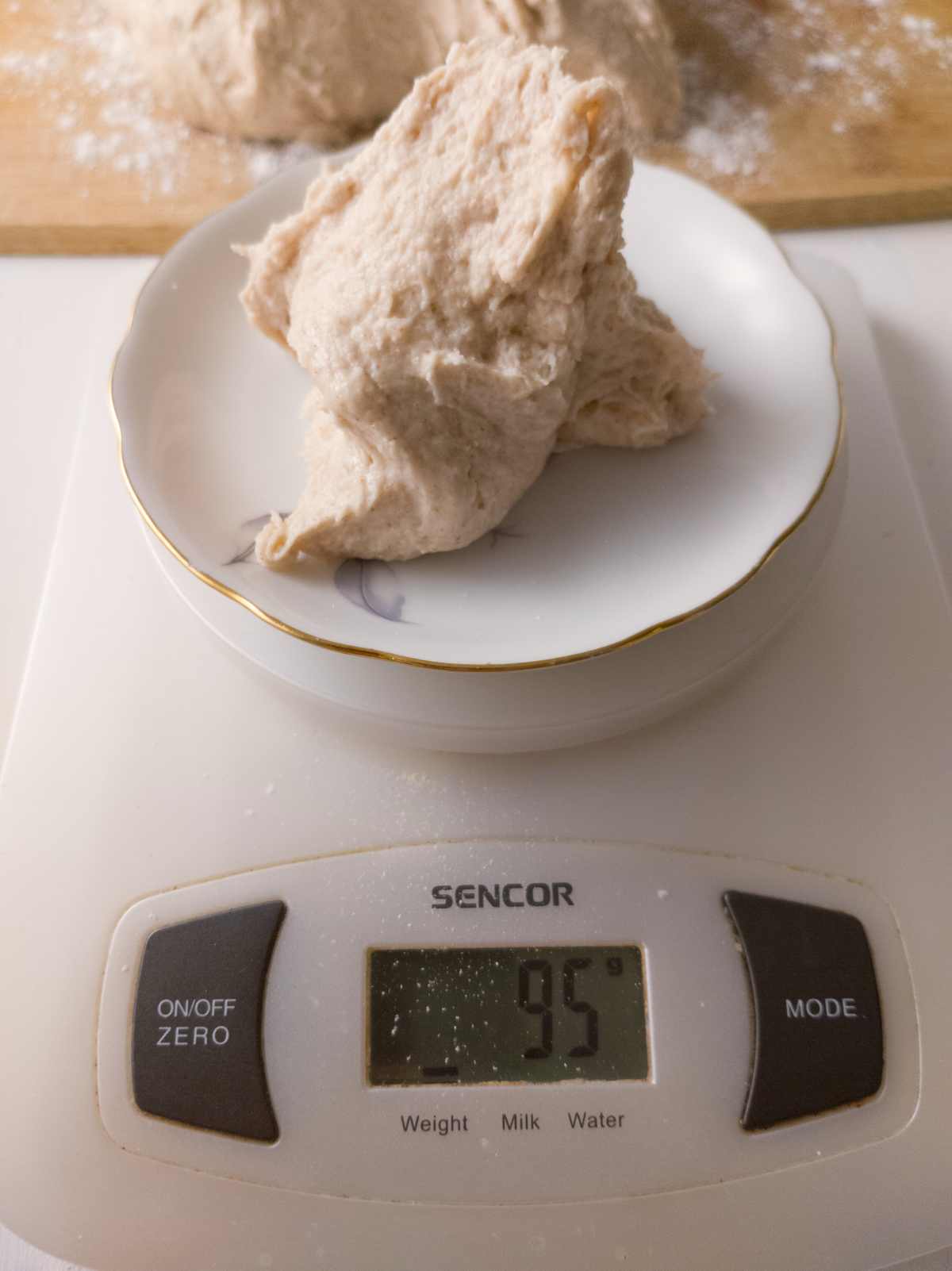
Separate the dough into 9 balls. I recommend using a digital scale to make sure all rolls are about the same weight. Mine are around 95 grams per ball.
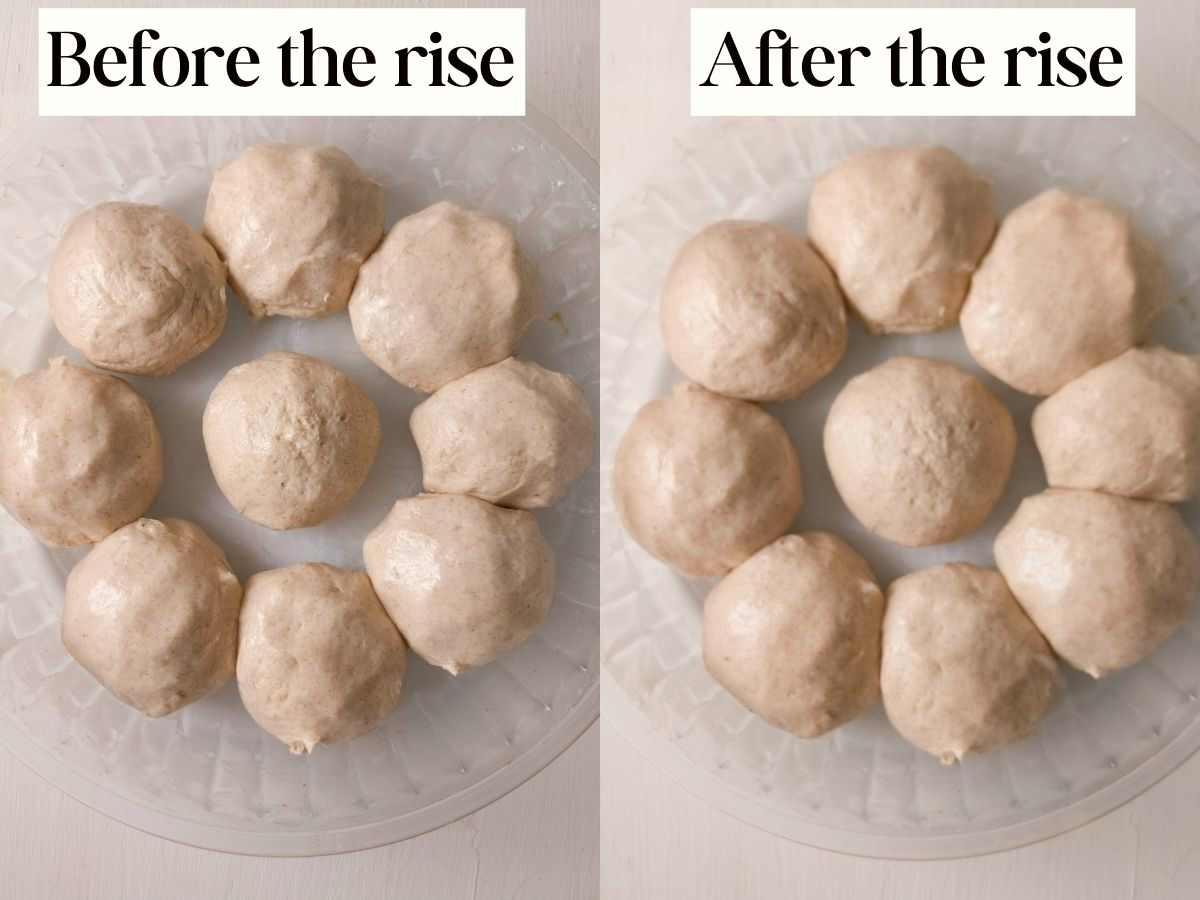
Finally, grease your hands with oil and shape each piece of the dough into a ball in between the palms of your hands. Place each ball into the greased baking dish, cover with a tea towel, and leave to rise for 3-3 ½ hours. The rolls won’t rise as much in this stage but they will puff up significantly during baking.
If you are using starter discard with yeast, let the rolls rise for only 1 hour.
Step 3 - Bake the rolls
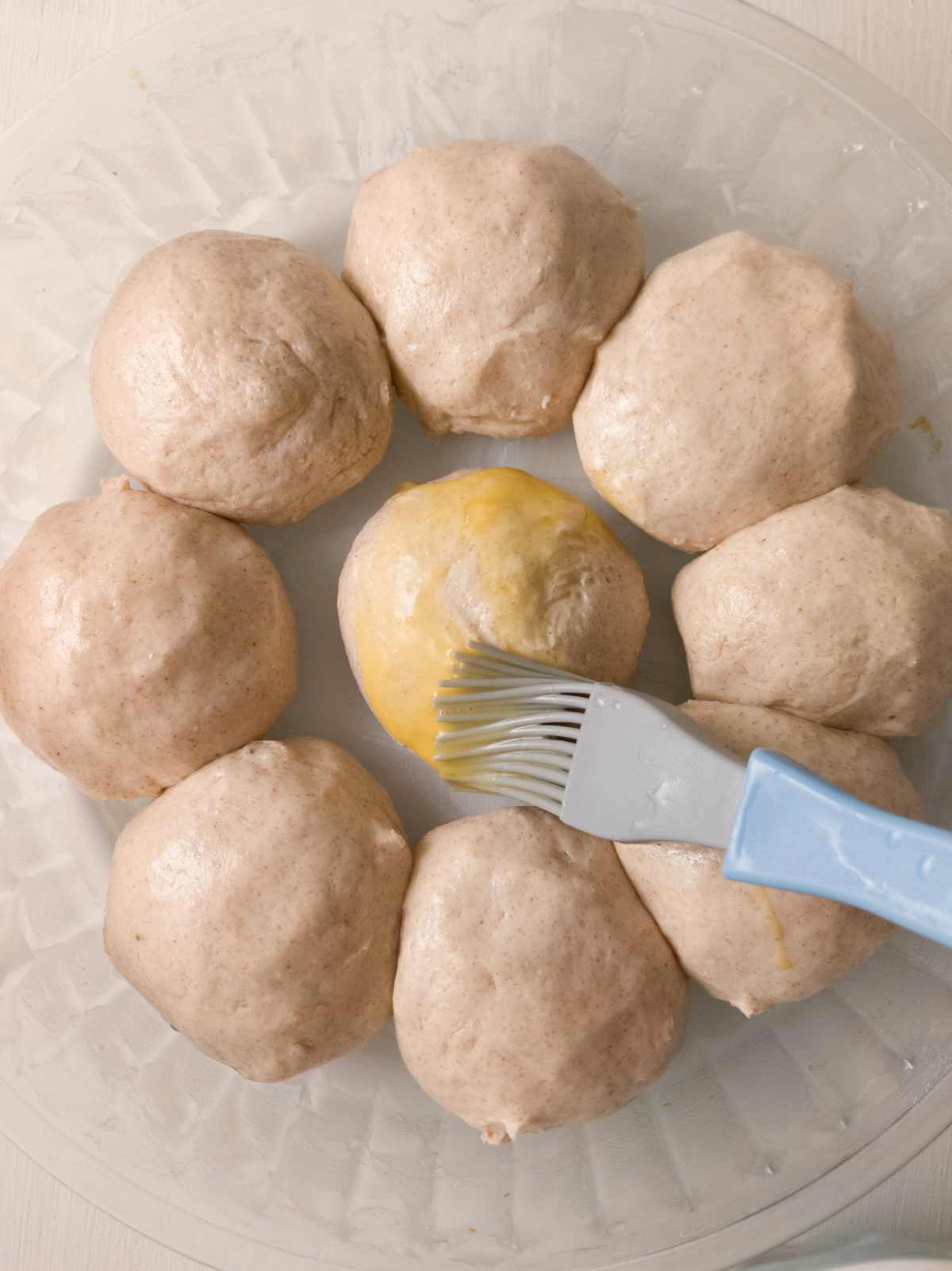
30 minutes before the rolls are done rising, start preheating the oven to 375F/190C. Once the rolls are ready (they will puff up a bit, but not much), prepare the egg wash and brush the rolls with it to encourage browning.
To make the egg wash just whisk 1 egg with a fork in a small bowl, then brush the rolls with it using a silicone or a baking brush. Don’t use the whole egg, use just enough to cover the entire surface of the dough.
Place a medium-sized dish with water on the bottom of the oven. The steam will encourage the oven spring (rising) and prevent the crust from forming. Your rolls will be very soft!
Bake for 25 minutes, then remove the water and bake for an additional 5 minutes. In these last 5 minutes, the rolls will brown more and finish baking. The internal temperature of baked-through rolls is 210F/100C. A toothpick should come out without raw dough sticking to it (a couple of crumbs is okay).
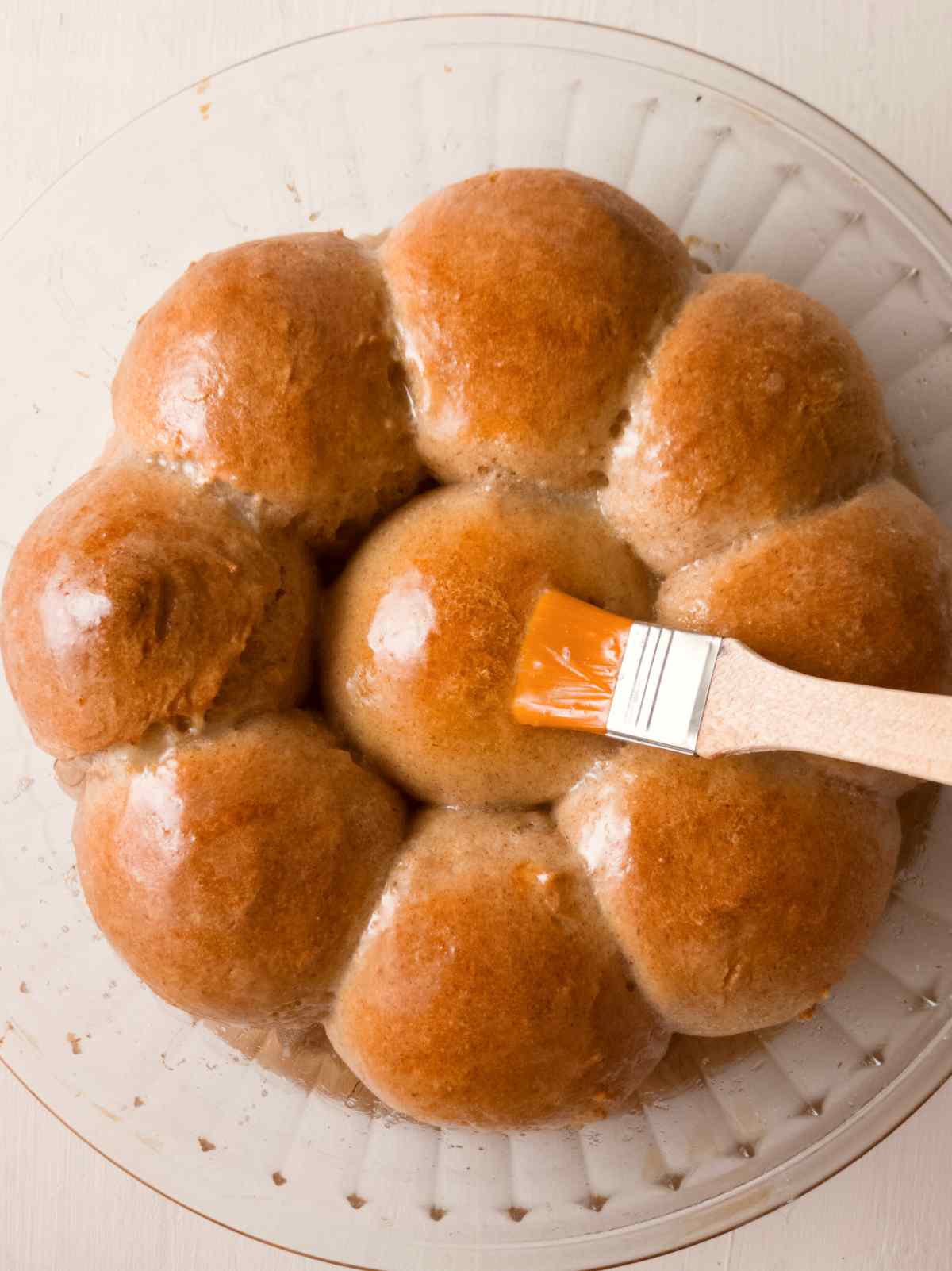
As soon as the rolls come out of the oven, generously brush them with melted butter while they are still hot. You can eat the rolls right away, no need to wait for them to cool!
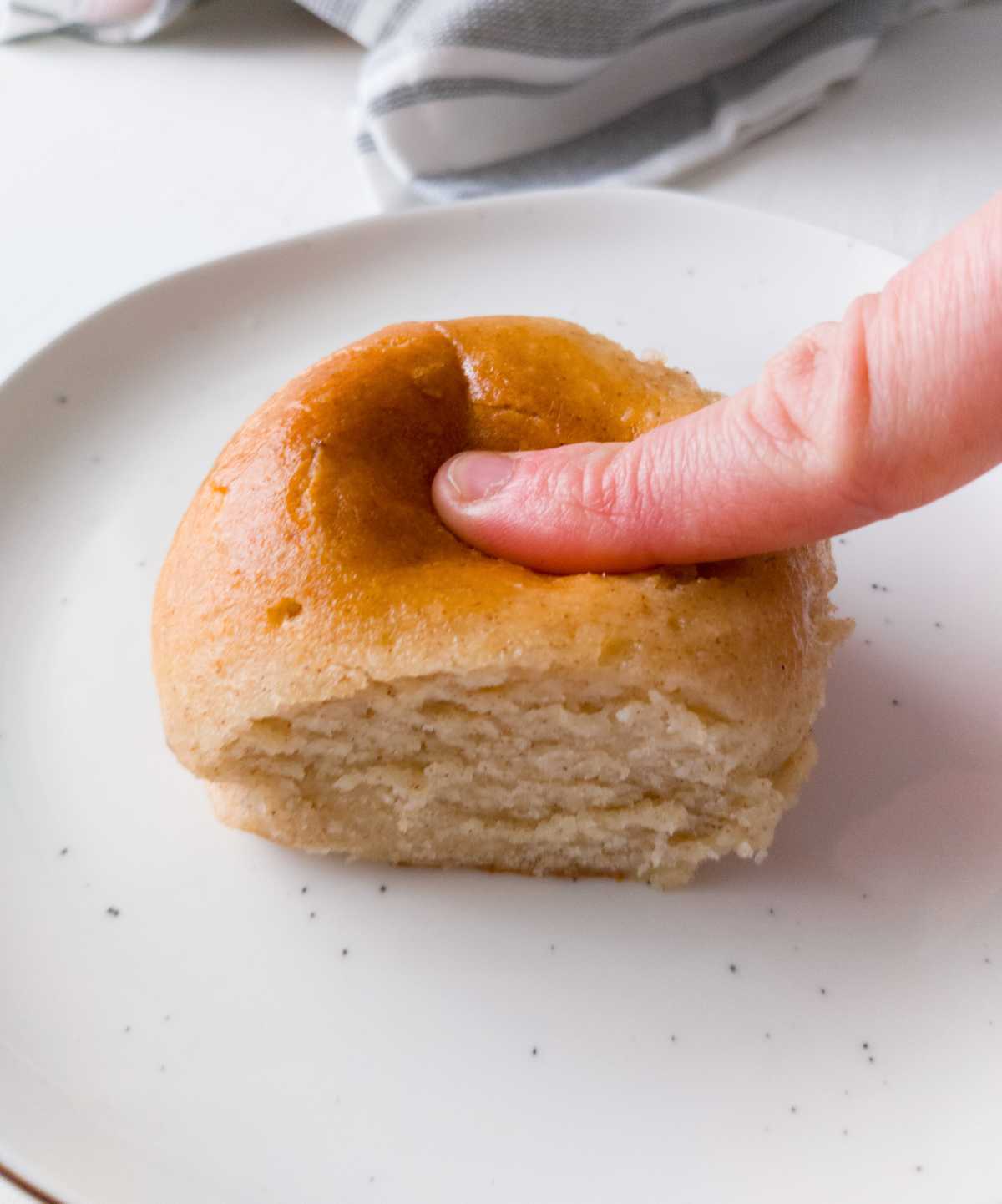
How To Store
The rolls are best on the day of baking but they can be kept at room temperature for 2-3 days in a textile bread bag or a sealed container. You can keep the dinner rolls in the refrigerator for 4-5 days or freeze them for up to 3-5 months.
To defrost, let them thaw at room temperature or warm them up in a microwave. If you are defrosting a few sourdough rolls at the same time, you can pop them into the oven at 375F/175C for 5-10 minutes or until ready. Brush with more butter for a better texture.
Expert Tips
- Use a digital kitchen scale for the best results. If you accidentally overpack or underpack the measuring cups (which is very easy to do, especially if you are in a hurry), you might end up with gummy or dense dinner rolls. A kitchen scale will also save you time (and dishes to wash!).
If you are using measuring cups, make sure to fluff up the flour in the jar first, then spoon it into the cups without pressing the flour into them, and then brush off the extra flour by swiping a knife over the top of the cup.
- Use an oven thermometer to avoid underbaking or burning. A lot of ovens run hot or cold (mine does!), so a thermometer allows you to have consistent results!
- Use a mature sourdough starter. If your starter is weak, only bubbles a little, or is not mature, the rolls will still be delicious, they just won’t have as many air pockets. A mature sourdough starter is a starter at its peak activity that is still bubbling (it hasn’t fallen flat yet). If you prefer using starter discard, add 7g of active dry/instant yeast or 20g of fresh yeast.
- If you want more sourness to your rolls, let them ferment overnight in the refrigerator.
- Keep greasing your hands if the dough gets sticky. The only time you need to use extra flour is to flour the working surface. Otherwise, avoid the urge to add flour!
FAQ
Why Did My Sourdough Rolls Burn?
Your oven might be running hot. Use an oven thermometer to make sure you are baking at 375F/190C and not higher.
Why Are My Rolls Gummy?
Your rolls might be gummy due to the type of flour you are using. If you are not using my homemade flour recipe, then increase the amount of flour you are using by 40g at a time.
Why Are My Rolls Not Rising?
If you followed the recipe, yet, the rolls are not rising, your sourdough starter might not be as active as it needs to be to raise the dough. Although you don’t need to see a big rise for the rolls to turn out great!
Is Sourdough Gluten-Free?
Sourdough is only gluten-free if you make it with gluten-free flour, otherwise sourdough is not gluten-free.
More like this
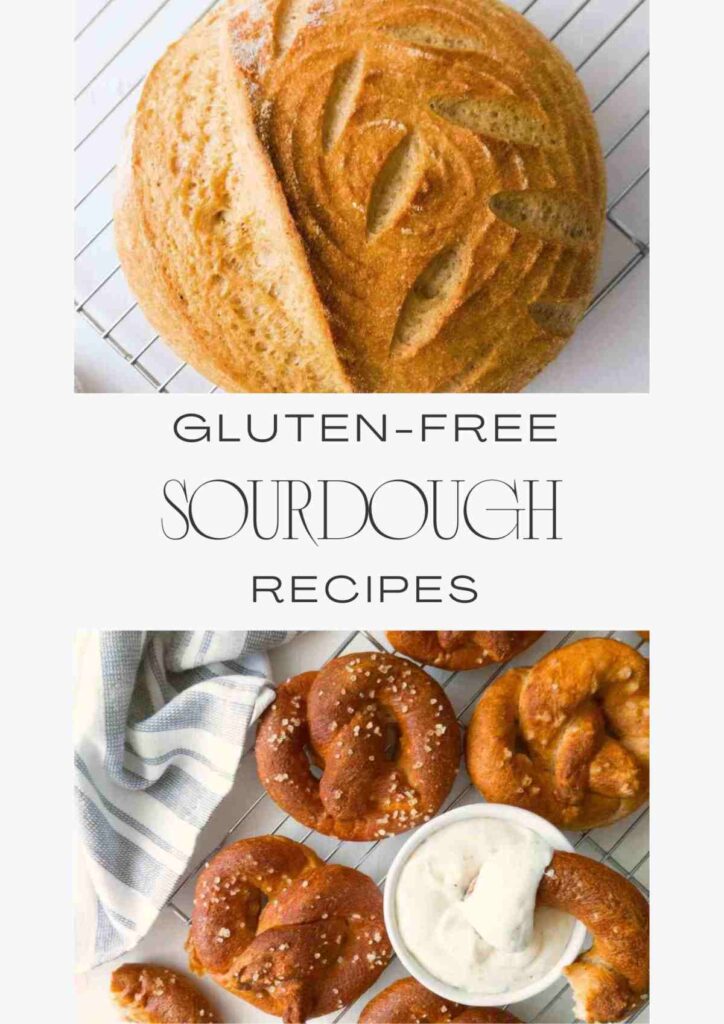
Get my GF sourdough recipes eBook
The top 16 recipes of 2024!
📖 Recipe
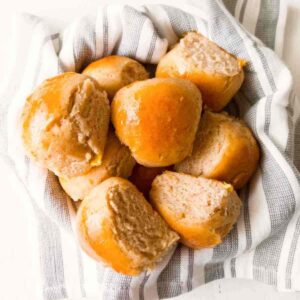
Gluten-Free Sourdough Rolls
Equipment
- 1 whisk
- 1 spatula
- 1 oven thermometer optional
- 1 baking dish medium size
Ingredients
Wet Ingredients
- 10 grams (5 tsp) psyllium husk 8 grams if using powder, for more info look at this psyllium husk guide
- 150 grams (⅗ cups) water room temperature
- 20 grams (1½ tbsp) oil I used sunflower oil
- 25 grams (2 tbsp) sugar maple syrup/honey
- 90 grams (⅓ cup + 2 tbsp) milk warm, not hot
- 200 grams gluten-free sourdough starter if you are using starter discard, add 7g of instant/active dry yeast or 20g of fresh yeasr
- 1 egg room temperature
Dry Ingredients
- 160 grams (1⅓ cups + 1 tbsp) tapioca starch arrowroot starch, potato starch, or cornstarch will work, too
- 130 grams (1 cup) brown rice flour or millet flour
- 25 grams (⅛ cup) lentil flour sorghum flour, GF oat flour, or white teff flour will work, too
- 2 teaspoon xanthan gum
- 2 tsp baking powder check the package to make sure it is GF
- 1½ teaspoon salt
You Will Also Need
- 1 egg for the egg wash
- 20 grams butter for brushing the buns after baking
Instructions
- Add psyllium husk, sugar, oil, milk, and water to a medium-sized bowl and whisk to combine. Set aside for a couple of minutes for psyllium gel to form.
- Add dry ingredients to the bowl of a stand mixer (or a large mixing bowl) and whisk to combine. Once psyllium gel is ready, add it to the dry ingredients along with the egg and the sourdough starter. If you are using starter discard, add 7g of instant/active dry yeast or 20g of fresh yeast at this point.Knead the dough for 5 minutes with a stand or hand mixer and 10 minutes if you are mixing by hand. Kneading for a longer time allows the rolls to have an extra smooth surface without bumps!
- Grease a medium-sized baking dish with butter, margarine, lard, or oil. Turn the dough onto the floured surface. The dough will be very sticky! Avoid the urge to add more flour. Rather, grease your hands with oil to prevent sticking. Keep greasing your hands if the dough starts sticking again!
- Separate the dough into 9 balls. I recommend using a digital scale to make sure all rolls are about the same weight. Mine are around 95 grams per ball.
- Finally, grease your hands with oil and shape each piece of the dough into a ball in between the palms of your hands. Place each ball into the greased baking dish, cover with a tea towel, and leave to rise for 3-3 ½ hours. The rolls won’t rise as much in this stage but they will puff up significantly during baking.If you are using starter discard with additional yeast, let the dough rise for 1 hour only.
- 30 minutes before the rolls are done rising, start preheating the oven to 375F/190C. Once the rolls are ready (they will puff up a bit, not much), prepare the egg wash and brush the rolls with it to encourage browning. To make the egg wash just whisk 1 egg with a fork in a small bowl, then brush the rolls with it using a silicone or a baking brush. Don’t use the whole egg, use just enough to cover the entire surface of the dough.
- Place a medium-sized dish with water on the bottom of the oven. The steam will encourage the oven spring (rising) and prevent the crust from forming. Your rolls will be very soft! Bake for 25 minutes, then remove the water and bake for additional 5 minutes. In these last 5 minutes, the rolls will brown more and finish baking. The internal temperature of baked-through rolls is 210F/100C. A toothpick should come out without raw dough sticking to it (a couple of crumbs is okay).
- As soon as the rolls come out of the oven, generously brush them with melted butter while they are still hot. You can eat the rolls right away, no need to wait for them to cool!

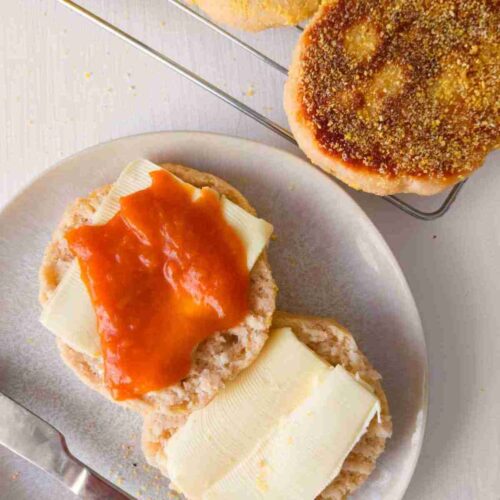

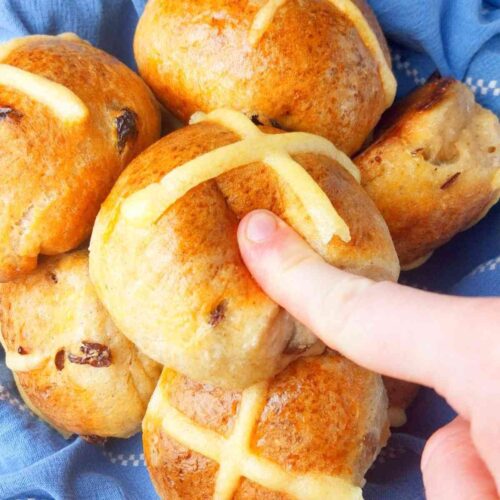
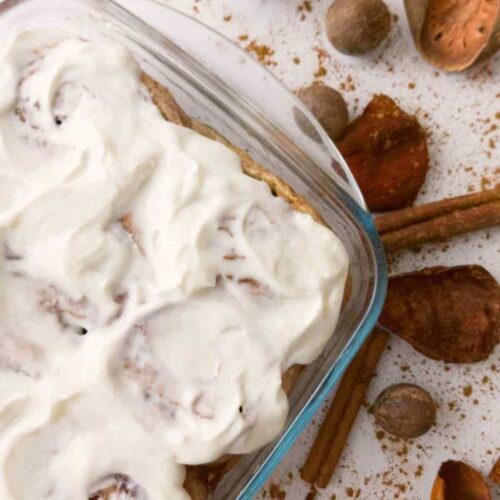
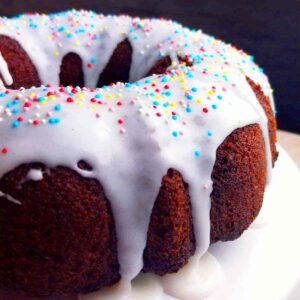
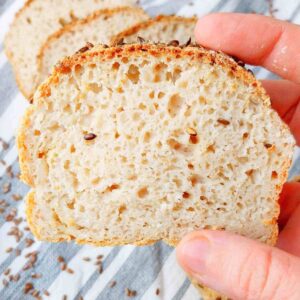


Anastasia
Best way to make this without xanthan gum?
Natashashome
I haven't made these without xanthan gum but you can try making it with psyllium husk only. In that case, use 20 grams of psyllium husk and 250 grams of water (my best guess!).
Kelly
Tonight was the 3rd time I've made these rolls, and I am in love! This recipe makes such delicious, fluffy rolls that are not even close to your typical gluten free option. Thank you!
Natashashome
I am so happy you like them! Thank you for your feedback!
Charlene
HELP, trying to make these for tonight. It says 150 GRAMS of water, but it also says 1 3/5 cups water??? Huh? Should it be MILLILITERS and not GRAMS, because that's not not even close 1 3/5 cups!
Natasha Levai
It is easier to measure water in grams rather than ml because of the measuring scale! Some scales can switch to ml but not all. So, to make it easier I just measure water in grams as well. The needed amount is 150g or 3/5 cups, sorry for the type, it is not 1 3/5 cup!
Lynne Sellers
I need help as I have made these twice and mine does not look at all like your photo. They are good but not soft like I think they should be. I am using a scale and all items listed along with the instructions. They just come out of the oven heavy and lumpy not smooth like yours.
Natasha Levai
Hi Lynne!
Are you mixing them with an electric mixer for the time indicated in the instructions?
Lynne
I am using my kitchenaid stand mixer
Natasha Levai
I see! Well, my other guess is the hydration of the dough. Is your dough very wet? It should be very wet, so wet that you can only shape the rolls with oiled or wet hands.
Miguel
hi there! tried doing these tonight. they came out of the oven beautiful, but then I brushed them with butter and once they cooled down they completely deflated and turned into a thick mass that was too heavy to warm. Any ideas of what can be going on? used a scale, a stand mixer and left them to fetkent as indicate. help!!
Natasha Levai
Hi Miguel! It sounds like they either were overproofed or underbaked! How long did you leave them to ferment for? Did you make any substitutes in the recipe?
Sherry
Good day!
Is it ever possible to use chia seeds or flax seed meal to replace all or some of the psyllium husk? It is so binding, and my kids have lots of gut difficulty. Thanks!
Natasha Levai
Hi Sherry! You can try, although chia and flax seeds are not nearly as good at binding as psyllium husk is!
Hannah Sindorf
I am going to make these, but we have an egg allergy. I am going to substitute with egg replacer for inside the recipe, but do you have any recommendations of what to use instead of an egg wash?
Natasha Levai
Hi Hannah! You can use butter or oil to brush the buns!
Nelle
Hi Natasha, do you think I can make this egg free by using substitutions like flax eggs or egg replacement? Thank you
Natasha Levai
Hi Nelle! The egg is only needed for brush the buns, so you can use butter or oil instead!
Jessica McGarity
I’m about to try this recipe and am worried about substituting corn starch for the tapioca flour. Any adjustments needed?
Natasha Levai
Hi Jessica! You can use tapioca flour instead of cornstarch without any further adjustments!
Vanessa
I made these and they were delicious! I love all your recipes. Do you think you can freeze them before rising? Could defrost a couple at a time, rise and bake for convenience. Thanks
Natasha Levai
Hi Vanessa! I think it should work well!
Melanie Tomazin
I have a question! I’m confused about the step regarding the sourdough discard. Isn’t anytime you bake with your sourdough start, the discard for that day? Some clarification would be awesome!!! I did the yeast just in case, rising now!
Natasha Levai
Hi Melanie! In this post discard means starter that isn't active (it either has been sitting in the fridge for a week or so, or the starter has been past its peak for a few hours). For the best results with starter, I recommend using the starter that is at its peak. If you only have discard, then adding yeast will help!
Charlotte Allen
Thank you for sharing your recipe, I made these for the first time yesterday and they turned out great. You were right in saying the dough is sticky but to persevere and not add flour (although I was tempted). I often find my GF bread is fine when first baked and within 24 hours it goes rock solid but I am pleased to say I had one with my lunch today and it was still soft. I followed your ingredients with recommended substitutions (I used sorghum instead of lentil flour) and had no issues as you had provided ample guidance, thanks again!
Natasha Levai
Hi Charlotte! I am so happy you liked the rolls! Yay! 🙂
Jason
I just made a triple batch of these, to make my annual Easter bunny buns. They look and smell fantastic, and I can’t wait to eat them. I just wish there was a way to post a picture :).
Kristina
We have made these rolls twice now. I made them a little bigger and we used them as hamburger buns instead of rolls. They worked great. I have now decided to try and modify the recipe to use the dough for cinnamon rolls. They look great and I am so excited to try them. Thanks for the great, versatile recipe.